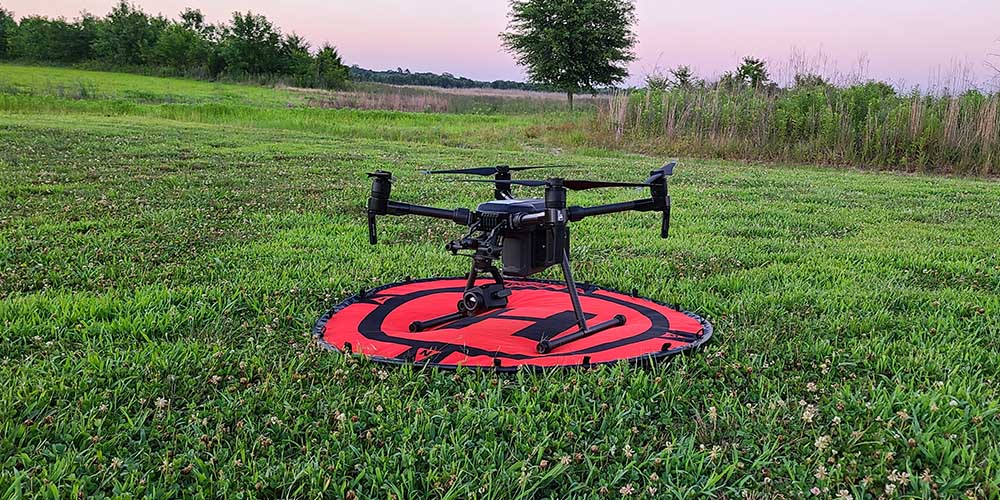Related Stories
Interactions Stories

A Pelican Breach
While the white pelican is a majestic bird, it can also be a major nuisance to Mississippi catfish farmers. USDA’s Animal and Plant Health Inspection Service (APHIS) estimates a pelican would need to consume up to 11 catfish per day to meet its daily energetic requirement. This means an average flock of 250 pelicans would consume roughly 2,750 fish per day, resulting in a daily production loss of nearly $3,000. Couple that with the fact that the birds are host to a variety of catfish parasites including the trematode Bolbophorus damnificus, which can cause production losses upwards of 60 percent, and it becomes evident that pelicans can devastate catfish ponds. To help catfish farmers mitigate pelican predation, more must be learned about the bird itself.
Specifically, FWRC researchers are studying how, when, and where these birds migrate and how certain factors such as wind, thermals, and climate change influence their fight patterns. They hope by answering those questions, they can help catfish farmers better estimate when and where ponds may be at greatest risk for pelican predation. The researchers, led by Dr. Guiming Wang, wildlife, fisheries and aquaculture professor, have built a model, which shows distribution based on the bird movement, to estimate pelican home ranges across seasons. U.S. Department of Agriculture, Wildlife Services, Wildlife Research Center funded the work.
2020

Understanding Deer's Flight Response to Avoid Vehicle Collision
In the U.S., deer/vehicle collisions cause 1.5 million motor vehicle accidents each year, resulting in 200 fatalities and over a billion dollars in property damage. That's why an FWRC scientist, with lead collaborators from participating agencies, sought to better understand how deer respond to approaching vehicles before a collision occurs. Dr. Ray Iglay, assistant professor in the Department of Wildlife, Fisheries and Aquaculture and FWRC researcher, was part of a team that evaluated deer responses to approaching vehicles. The aim of the team was ultimately to decide how the deer responded to different threats, whether they would go across the road or away from the road. The team conducted an opportunistic experiment protocol, recording observations of deer during a six-month period on two lane roads with maximum speeds of 40 miles per hour.
The researchers studied flight initiation distance (FID) or the distance from an approaching predator at which the prey flees. The team recorded 328 vehicle approaches toward groups of an average of two deer. While the team found that proximity to the road influenced FID, deer didn't demonstrate spatial or temporal safety thresholds and FID wasn't impacted by either oncoming vehicle speed or environmental conditions. The team also found that road crossing was influenced by group size and proximity to the road. Collaborators include Dr. Morgan Pfeiffer, Dr. Bradley Blackwell, and Mr. Thomas Seamans, U.S. Department of Agriculture, Animal and Plant Health Inspection Service (APHIS); Dr. Travis Devault, Savannah River Ecology Laboratory, University of Georgia; Wildlife Services, National Wildlife Research Center, and the Ohio Field Station.
This research is funded by FWRC and U.S.D.A. Wildlife Services National Wildlife Research Center.
2022

FWRC Scientists Look to Drones to Identify Potential Flight Disruptions
Wildlife residing near airports can pose threats to aircraft and themselves. Dr. Ray Iglay, principal investigator and assistant professor of wildlife ecology, and his team of FWRC scientists are using small Unmanned Aircraft Systems (sUAS), commonly known as drones, to do the wildlife surveillance work at airports traditionally done by biologists. Iglay said that getting accurate counts of wildlife is difficult because they can be hidden or camouflaged. Iglay and his team worked on testing the drones at local airports and on designing software that would detect the animals, identifying both their location within the landscape and their species. This effort is part of a larger research collaboration among MSU, the Ohio Field Station of USDA/APHIS Wildlife Services National Wildlife Research Center, and the Federal Aviation Administration, or FAA.
Iglay said that the project aimed to provide a system to the FAA that will allow them to monitor wildlife using sUAS and inform mitigation efforts in aircraft-wildlife incidents.